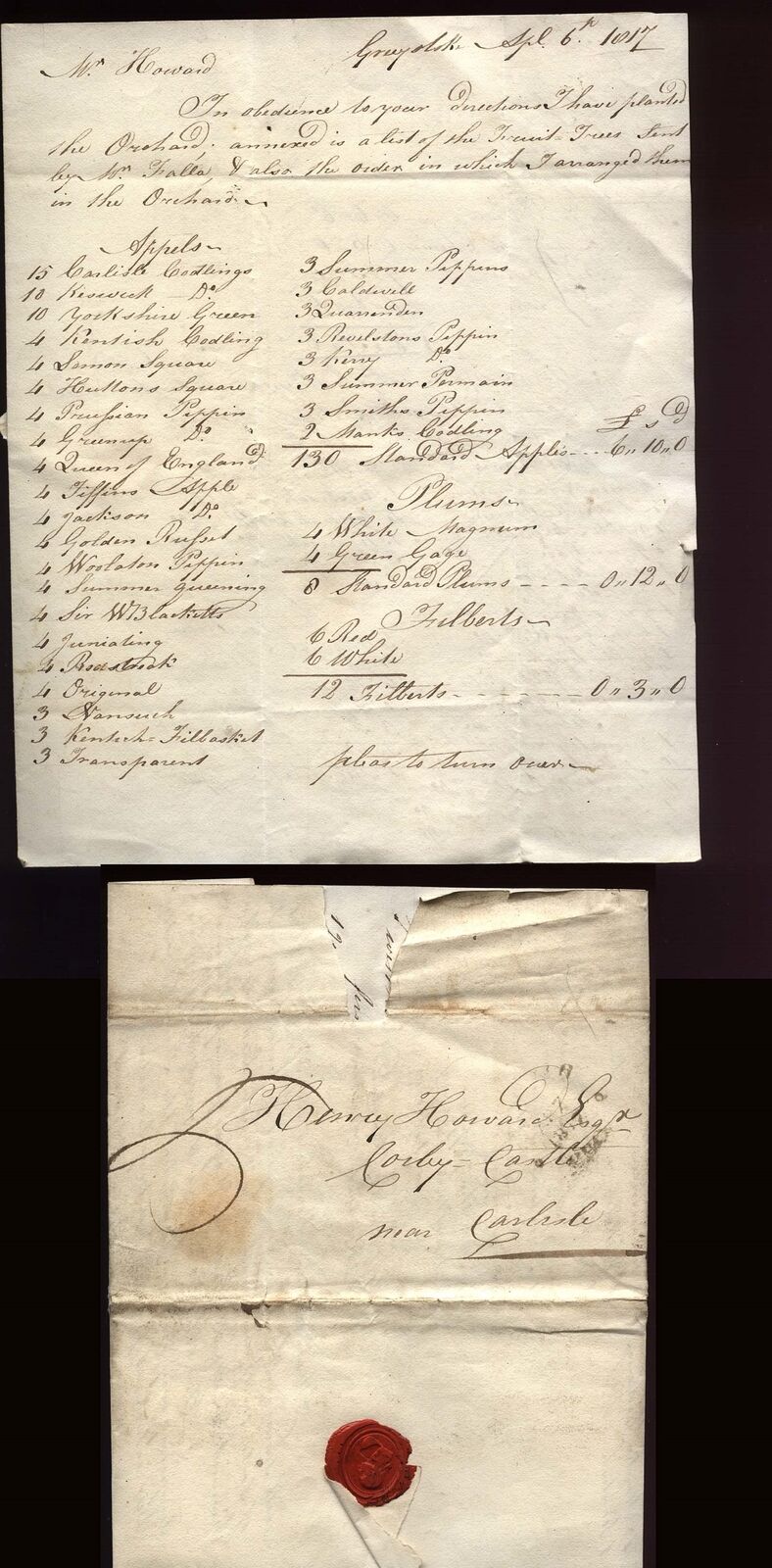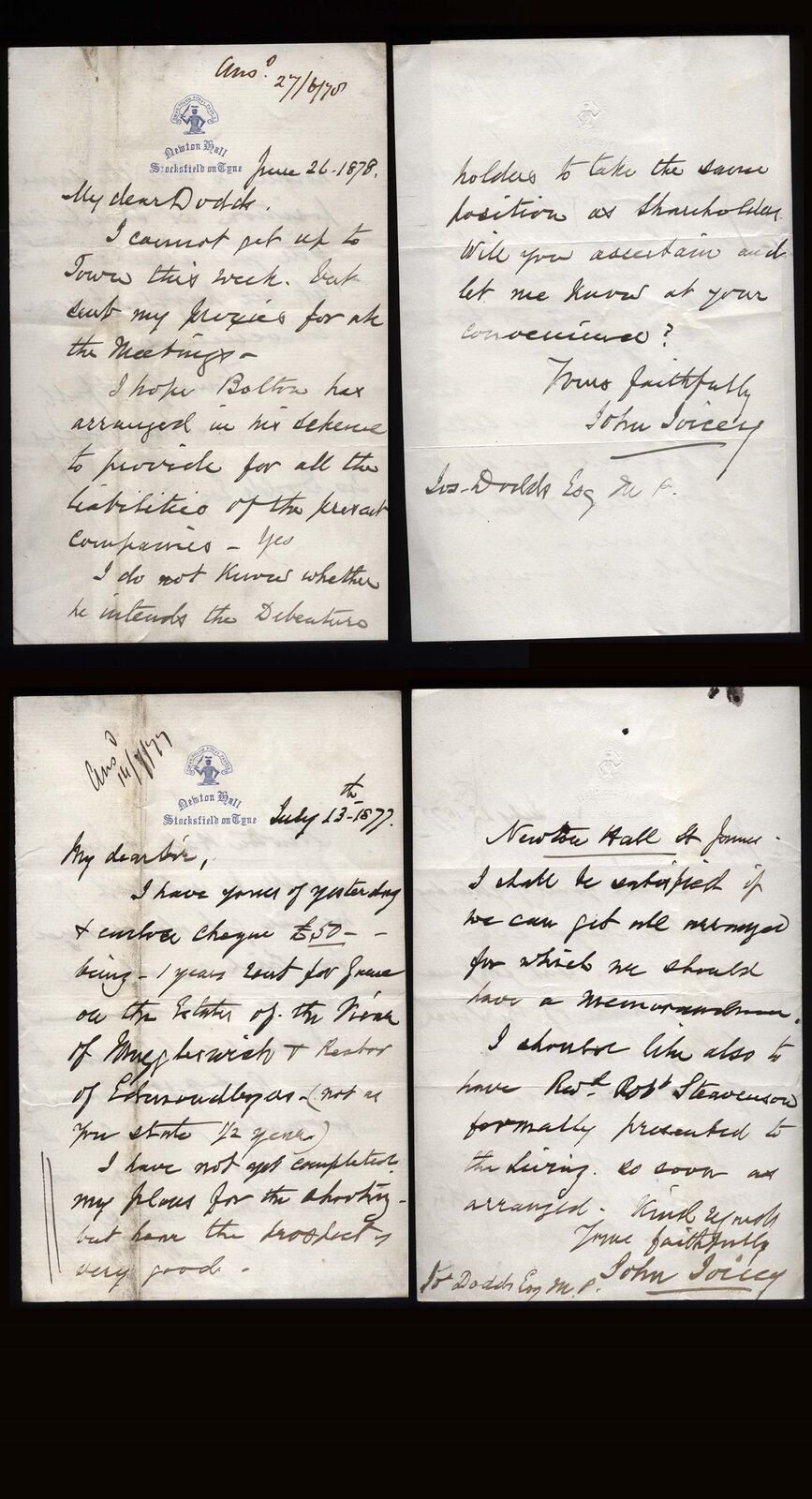-40%
1830 WALLS END letter James Buddle, CIVIL ENGINEER re RYTON GLEBE COLLIERY
$ 57.58
- Description
- Size Guide
Description
1830 WALLS END letter James Buddle, CIVIL ENGINEER re RYTON GLEBE COLLIERYThis product data sheet is originally written in English.
1830; Fine 2 page letter from John Buddle, Wallsend 5th Sept to Thorp & Dickson, Solicitors in Alnwick and regarding the RYTON GLEBE COLLIERY Lease.
Much of Wallsend's early industry was driven by coal mining. The Wallsend Colliery consisted of seven pits which were active between 1778 and 1935. In the 1820s the pits became incorporated as Russell's Colliery, which then became The Wallsend and Hebburn Coal Company Ltd. By 1924 the colliery employed 2,183 people.
Its most prominent manager was mining and railway engineer John Buddle who helped develop the Davy Lamp
John Buddle John Buddle (1773-1843) of Wall's End, Newcastle-upon-Tyne
1808 April. William Stobart and John Buddle appointed as inspectors to the Thames Archway Co
1832 John Buddle of Newcastle-upon-Tyne, a Civil Engineer, became a member of the Institution of Civil Engineers.
Biography
Mr. John Buddle, M.Inst.C.E., was born at Kyo, near Lanchester, in the county of Durham, in 1773, and resided there nearly twenty years, when he removed to Wallsend with his father, who had then attained considerable eminence as a colliery viewer.
The elder Mr. Buddle was a man of considerable attainments in mathematics; he was a correspondent of Hutton, Emerson, and other eminent men, and contributed many papers to the scientific publications of that period. He was remarkable for the systematic manner in which he conducted his professional avocations; and to him we are indebted for the introduction of iron tubbing for sinking shafts, which, it is believed, was first used at the Wallsend colliery. At an early age Mr. John Buddle evinced an attachment for active occupation, and an eager pursuit of experimental knowledge. These studies and pursuits were encouraged by his father, from whom he derived nearly the whole of his education, having only been at school during one year when very young.
He became very early the assistant of his father as a colliery viewer; and on one occasion, when, as usual in cases of emergency, the viewers of different collieries were called together, to consult on the means of stopping an extensive fire of gas in the Washington pits, he suggested the trial of a jet of water moved rapidly, alternately, across the flame, in the same manner as in his boyish experiments he had cut off the flame of gas with a knife: the plan was adopted, and being carried into effect by himself, was perfectly successful.
After the death of the elder Mr. Buddle, his son succeeded him in the management of the Wallsend colliery, and there, in 1810, he introduced those extensive improvements in ventilation which have been so much imitated.
He was engaged as the viewer and consulting engineer of a number of the principal collieries in the North of England. His experience in all the details of the coal trade led to his being frequently examined as a witness in Parliamentary Committees; and he was also employed as consulting engineer on railways and general engineering questions.
In 1838 he was appointed one of the Dean Forest Mining Commissioners, and his tact and experience materially aided in the successful completion of their labours.
He was very liberal, and his charities were extensive. He took great interest in the local scientific societies, and, even amidst his numerous engagements, found time to communicate to them some valuable papers.
To all who have visited the coal-mines of the North of England, or have taken any interest in the history of coal-mining, the name of Mr. John Buddle is familiar.
He was active, steady, and unremitting in the discharge of duties which were attended at all times with much personal fatigue, and frequently with imminent danger. He was extremely exact in his extensive correspondence, and kept a diary, which may probably furnish materials for a detailed and useful memoir.
In private life he was distinguished by many excellent qualities and social virtues. Among other accomplishments he was a superior musician; and his retentive memory, and happy mode of explaining and illustrating his subject, rendered him as agreeable a companion as he was a valuable friend.
His habits were extremely simple, but his house for nearly half a century was the resort of most of the scientific strangers who visited the North of England, and his hospitality was unbounded. Whether viewed in his professional or private character, he has left solid claims to admiration and esteem, and his death may justly be regarded as a public loss.
He died on the 10th of October, 1843, at the age of seventy years, and was interred in the ground which he had given for a cemetery, and where a church had been erected, on his estate at Benwell, near Newcastle.
:
Powered by SixBit's eCommerce Solution
1830; Fine 2 page letter from John Buddle, Wallsend 5th Sept to Thorp & Dickson, Solicitors in Alnwick and regarding the RYTON GLEBE COLLIERY Lease. Much of Wallsend's early industry was driven by coal mining. The Wallsend Colliery consisted of seven pits which were active between 1778 and 1935. In the 1820s the pits became incorporated as Russell's Colliery, which then became The Wallsend and Hebburn Coal Company Ltd. By 1924 the colliery employed 2,183 people. Its most prominent manager was mining and railway engineer John Buddle who helped develop the Davy LampJohn Buddle John Buddle (1773-1843) of Wall's End, Newcastle-upon-Tyne 1808 April. William Stobart and John Buddle appointed as inspectors to the Thames Archway Co1832 John Buddle of Newcastle-upon-Tyne, a Civil Engineer, became
Related Interests
Royalty
EAN
Does Not apply
Country
England
England County
Northumberland
City/Town/Village/Place
Wallsend
Famous Persons
John Buddle
Autograph Type
Manuscript Letter
Era
1821-1830
Document Type
Manuscript posted letter
Year of Issue
1830









